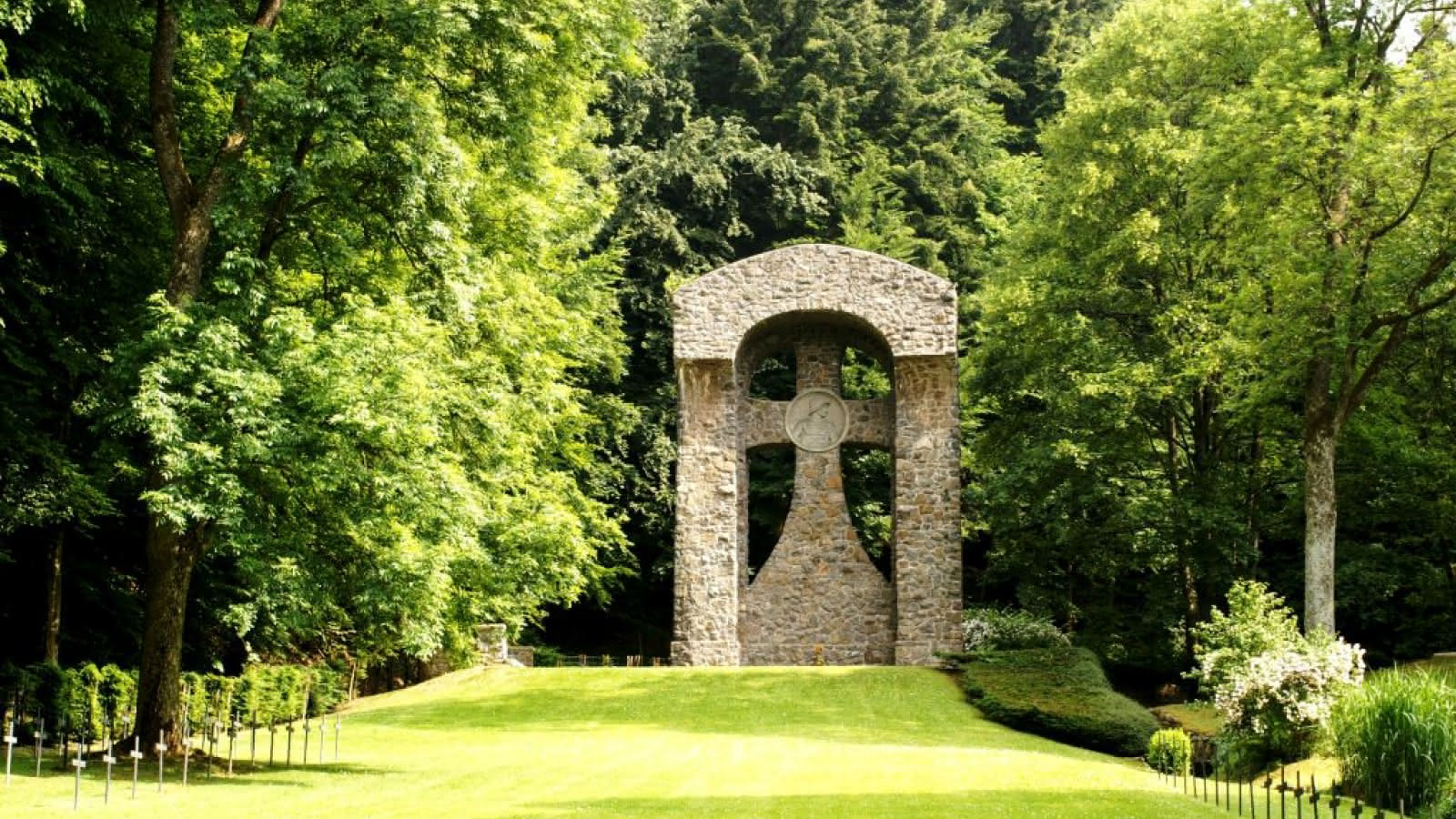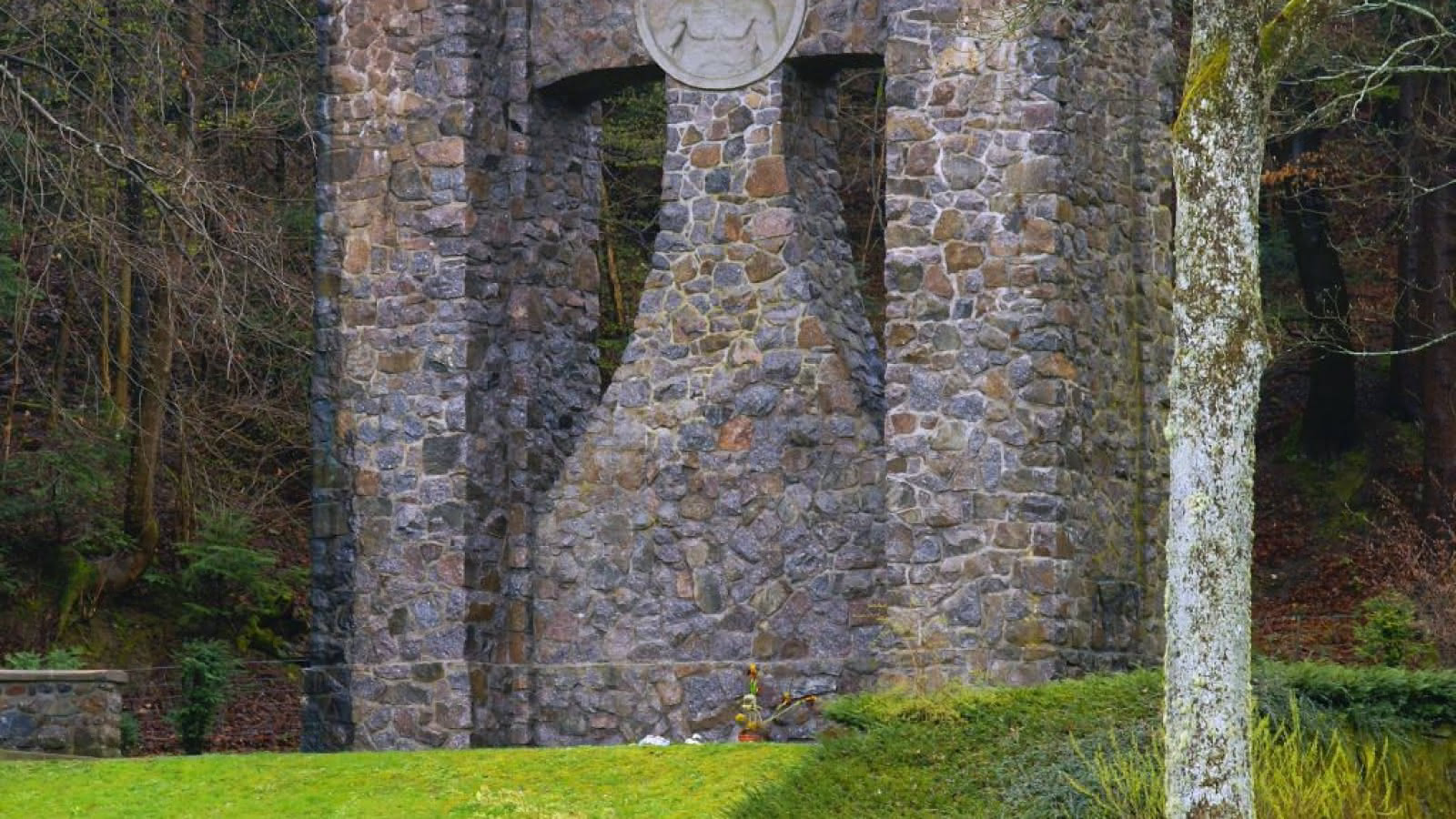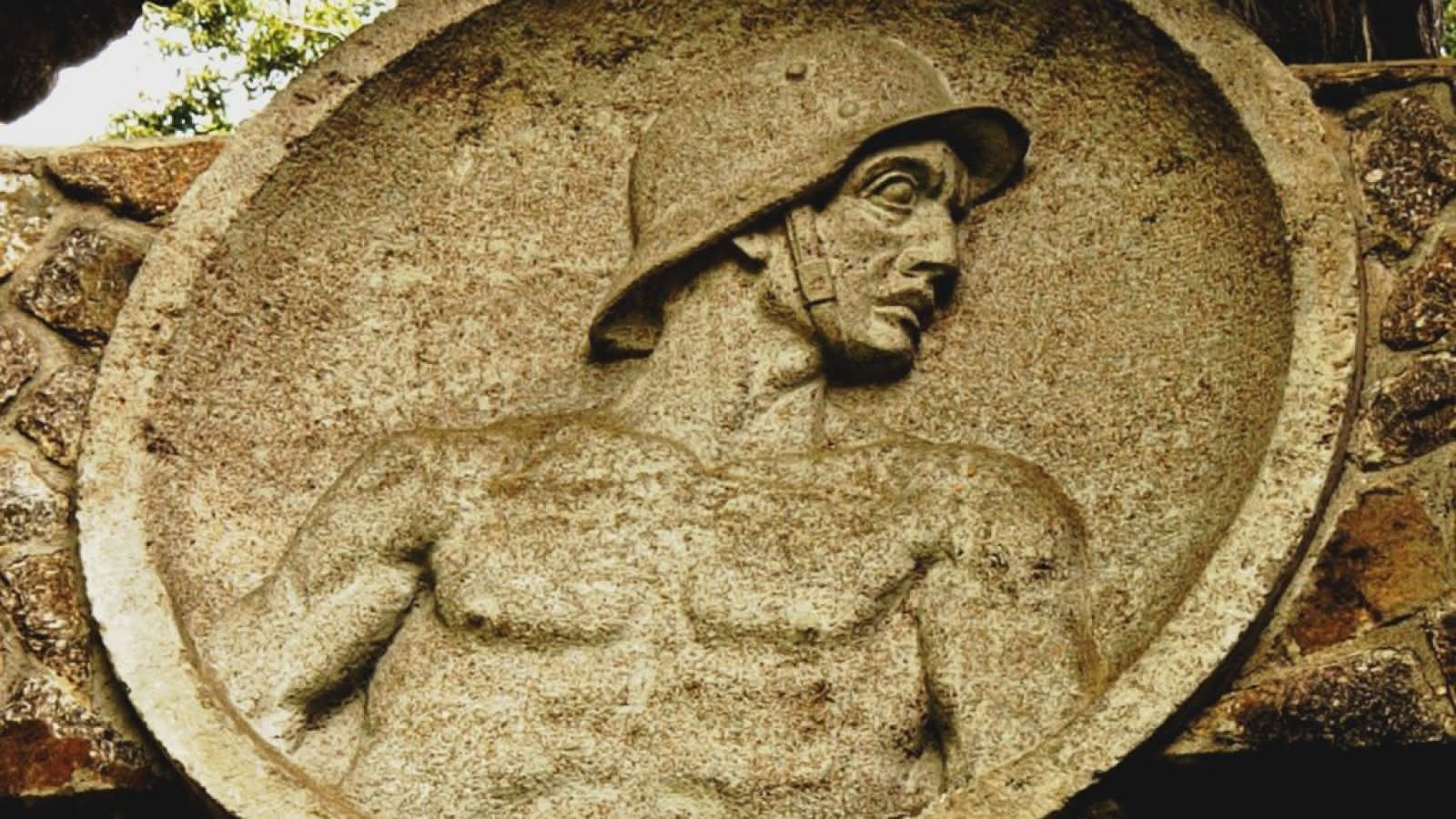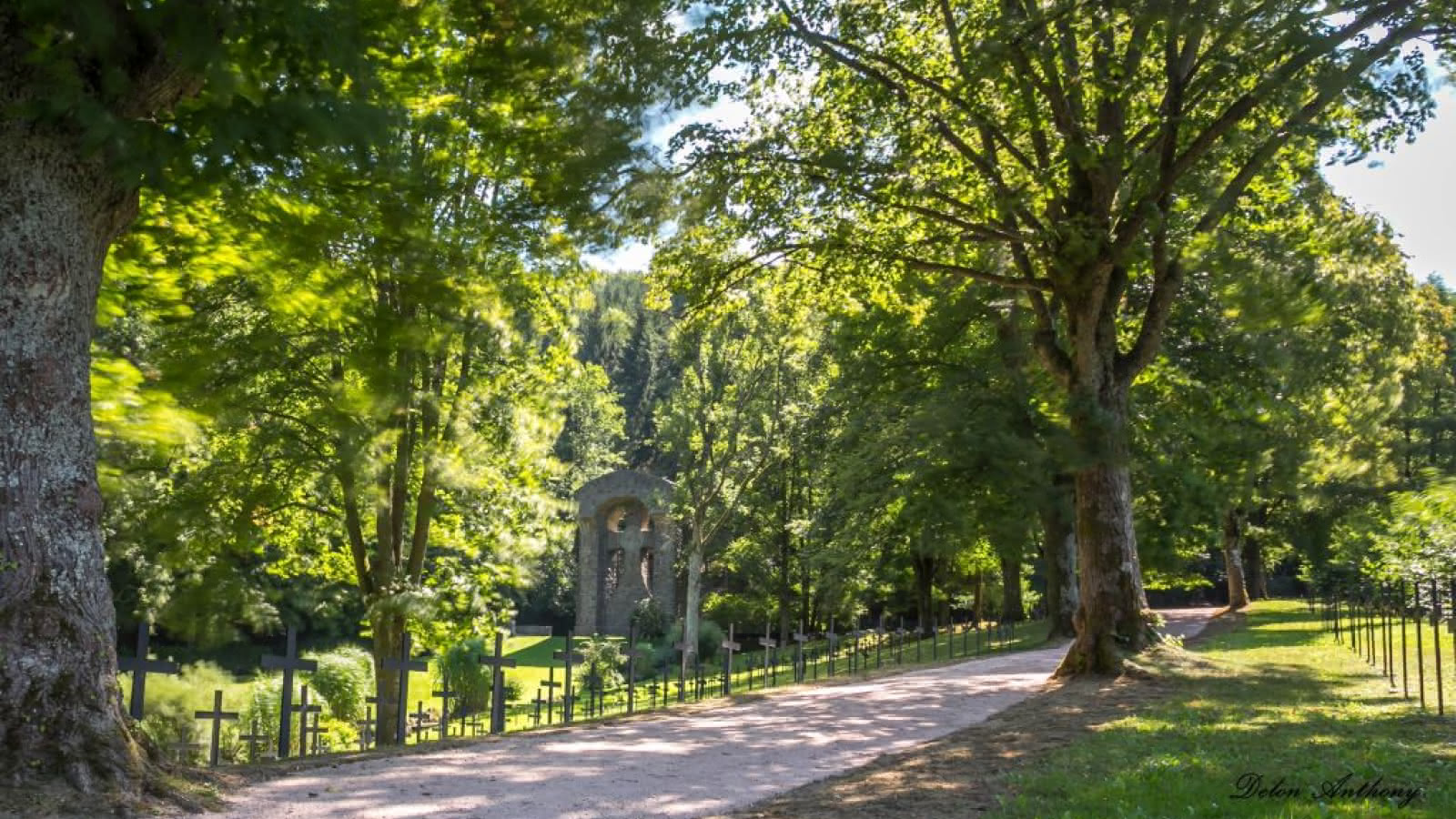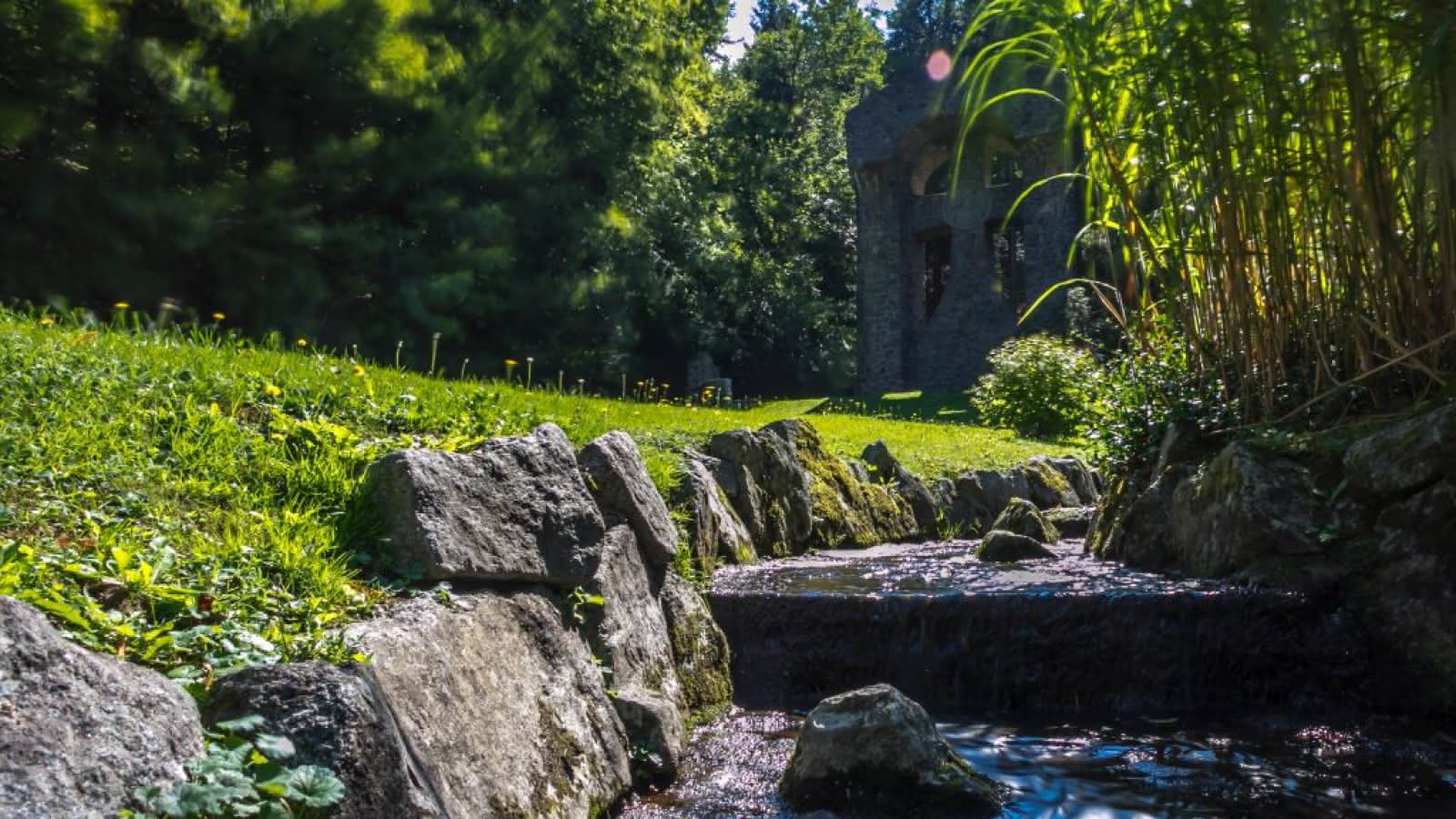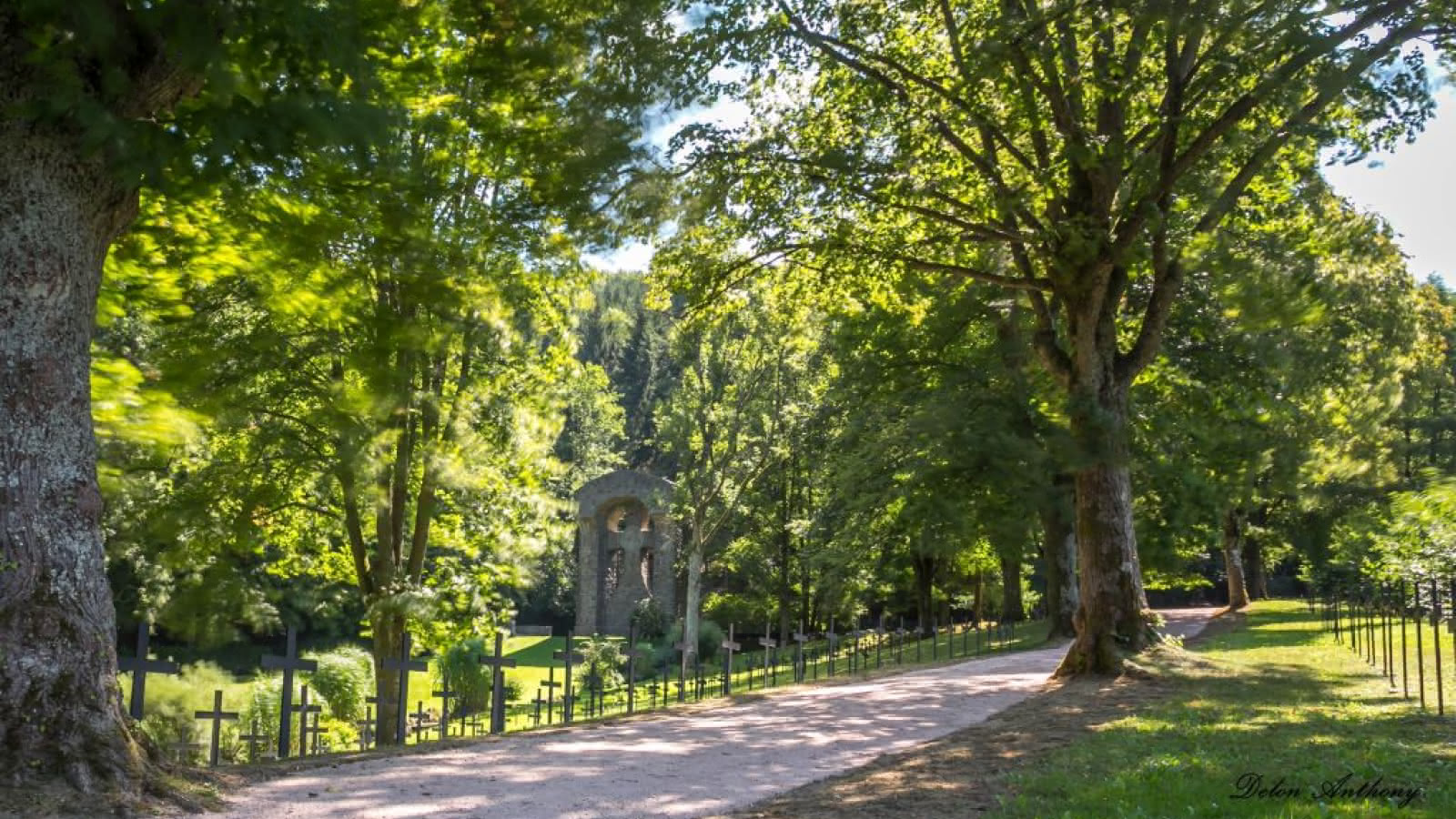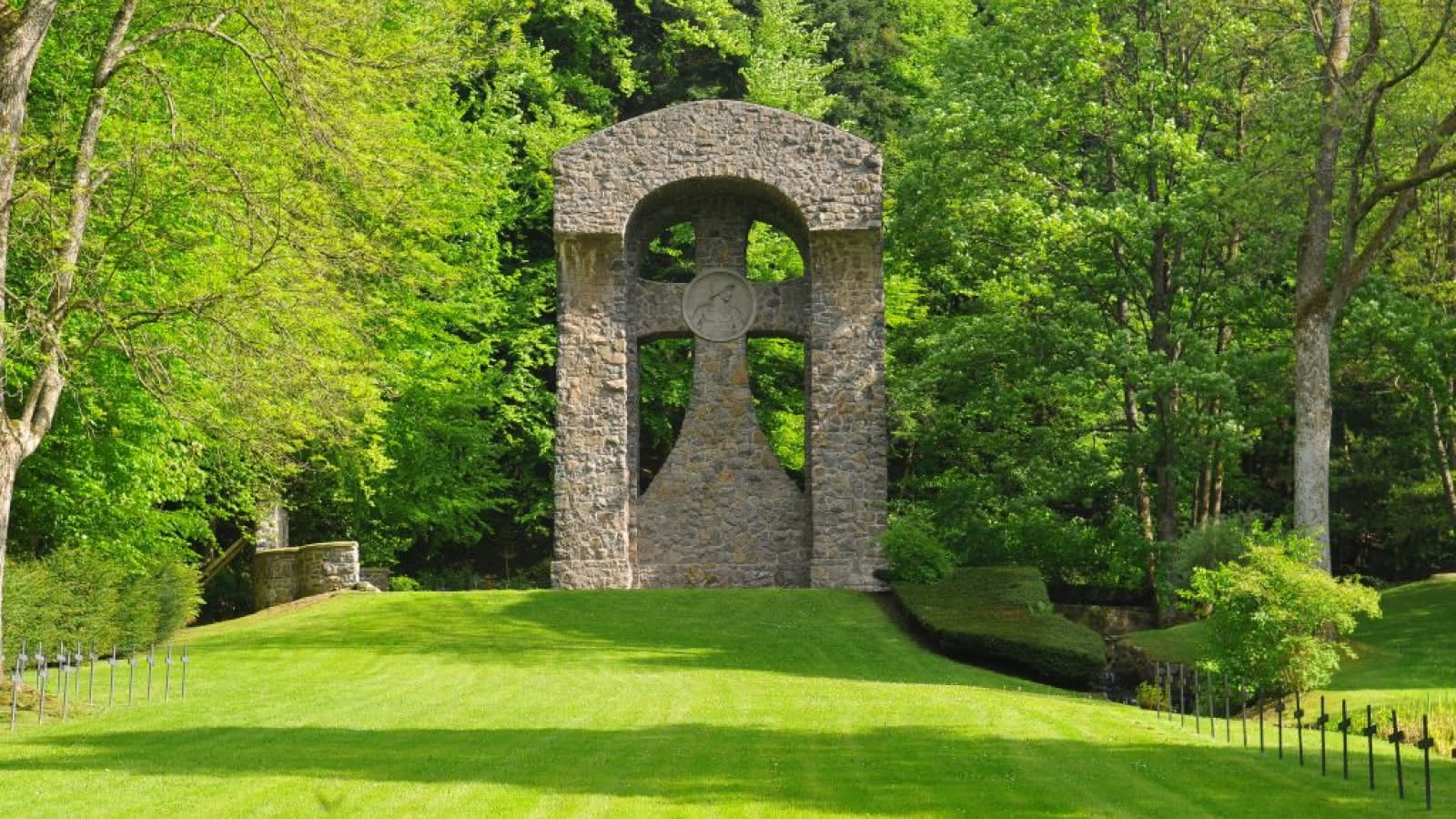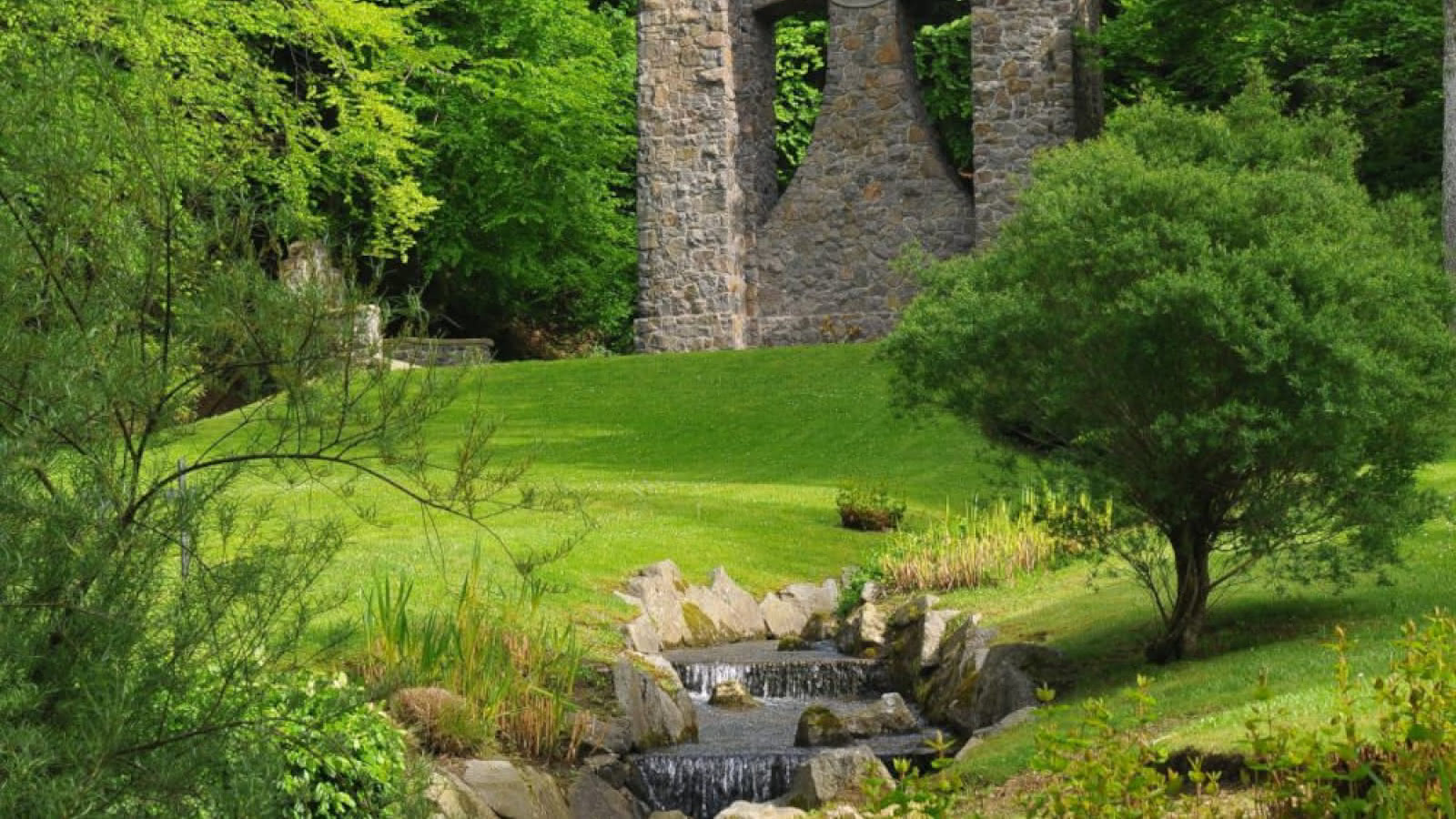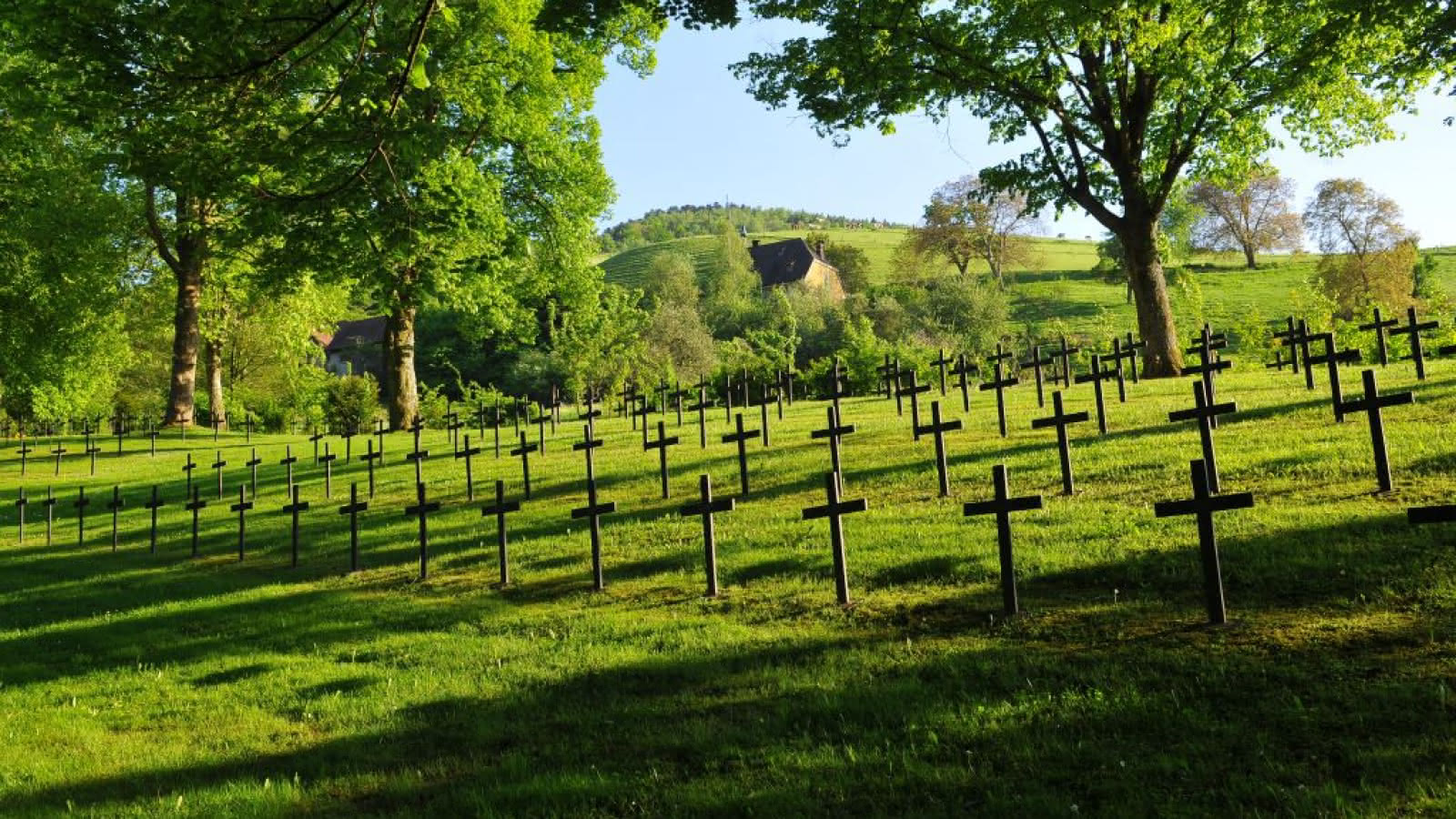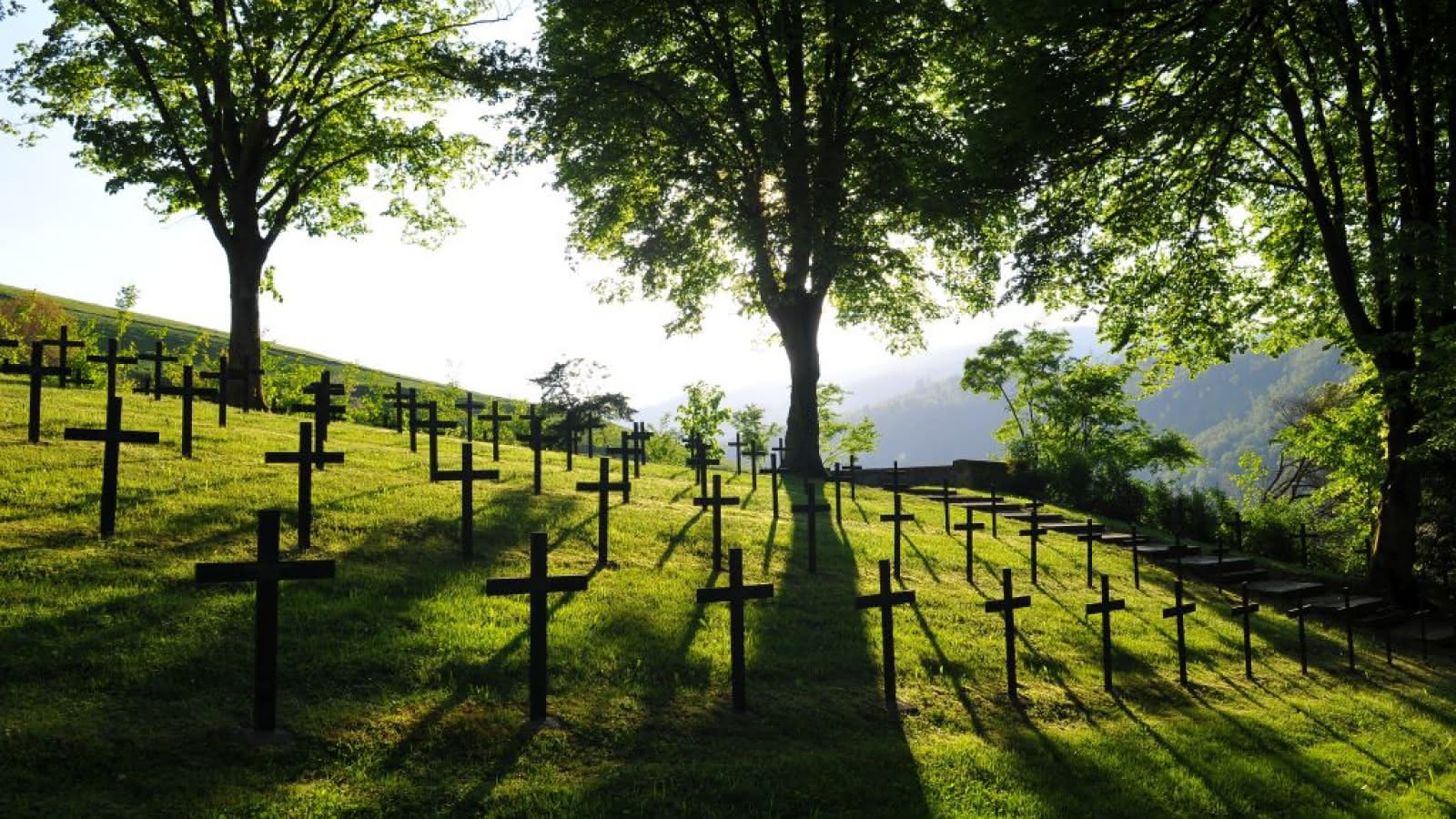Montgoutte German military cemetery
" 
After crossing the traffic circle near Atelier de Guillaume, head for Sainte-Marie-aux-Mines and then take the first left to drive along the Saint-Guillaume cemetery, following the small asphalt road. At the end of the asphalt road, take the path on the right. This will take you to a forest parking lot, where you can park your car and discover the Montgoutte military cemetery.
The Mongoutte military cemetery, like ten other sites in Alsace, has been listed as a UNESCO World Heritage Site since September 2023.
In the early years of the 1914-1918 war, soldiers were buried as close as possible to where they fell. Simple wooden crosses isolated in the middle of the forest marked a soldier's grave, with flowers planted by his comrades. Later, military squares were created in communal cemeteries.
In 1916, the German War Graves Service was set up to develop and maintain the many military cemeteries in the area. In 1916-1917, this service erected the monumental Montgoutte cemetery, using civilian workers and prisoners of war. The graves are lined up on either side of a monumental granite cross, whose bronze medallion depicts a German soldier. The stream running through the middle of the cemetery is symbolic of rest and peace. 1,000 German soldiers are buried here: 671 in individual graves, 365 in collective graves following the post-war amalgamation of all surrounding cemeteries.
Today, the Montgoutte cemetery is maintained by the German federal government, which sends military personnel based near Bruchsal Untergrombach every year to carry out maintenance work. Their regular visits led to the twinning of Sainte-Marie-aux-Mines and Bruchsal d'Untergrombach in 1989, symbolically sealing Franco-German reconciliation.
Find out more:
https://patrimoine.valdargent.com/images/A_TELECHARGER/5.3_expos_et_diaporamas/07_la_grande_guerre/expo_grande_guerre.pdf
- Distance to the nearest station (km) : 20km
- Type of visits proposed : Free visit


